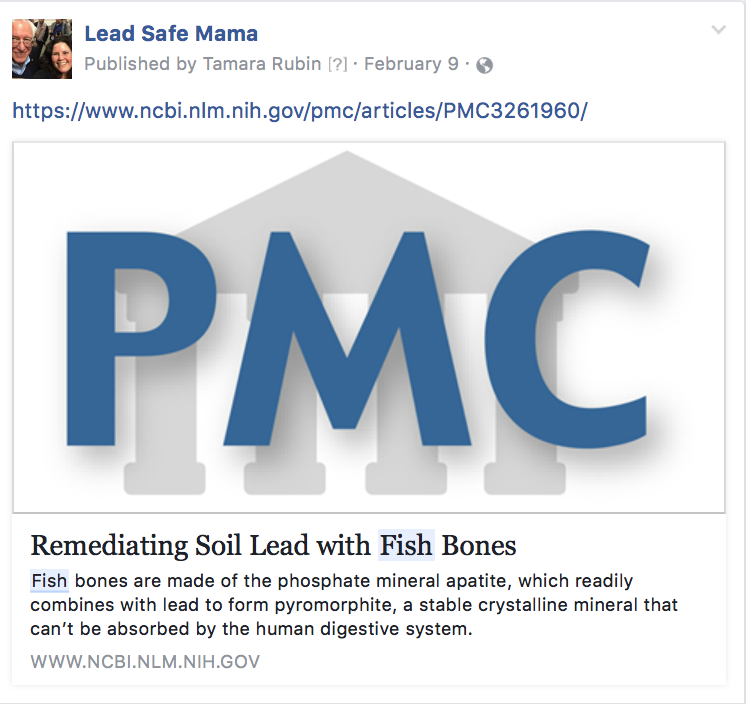Study: Remediating Soil Lead with Fish Bones, January 2012
“Fish bones are made of the phosphate mineral apatite, which readily combines with lead to form pyromorphite, a stable crystalline mineral that can’t be absorbed by the human digestive system.1,2 Now researchers are using fish bones and other phosphate-rich amendments to remediate lead in urban soils. “We have seen reduction in bioaccessibility in some lab samples up to fifty percent within just a few weeks of treatment,” says Steve Calanog of the U.S. Environmental Protection Agency (EPA), who is overseeing an agency project using fish bones to clean up soils in the South Prescott neighborhood of Oakland, California.3
In situ and laboratory tests have shown that phosphates can also immobilize other potentially toxic metals, including copper, zinc, cadmium, and uranium.1,4,5,6,7,8 In one of these studies, lead concentrations in soil leachate treated with fish bones dropped from 0.28 mg/L to 0.00065 mg/L within weeks.6,7 Unlike phosphate fertilizers, the apatite in fish bones does not run off the soil.2 Fish bones also are being used as a phosphate source for lead remediation projects in other urban areas, including a pilot project in New Orleans, Louisiana, funded by the U.S. Department of Housing and Urban Development.9″
Click the image below to continue reading.
Never Miss an Important Article Again!
Join our Email List



Do fish bones concentrate lead like other animal bones? Is it safe to eat soft fish bones like the ones in canned salmon? Might the phosphate in the bones help decrease lead in the human body or does that only happen in soil?
I don’t think you can extrapolate soil remediation studies to have relevance to human biology studies. The soil studies generally show toxicity improvement due to dilution with cleaner materials, not necessarily chemical reactions that clean up the soil.
T